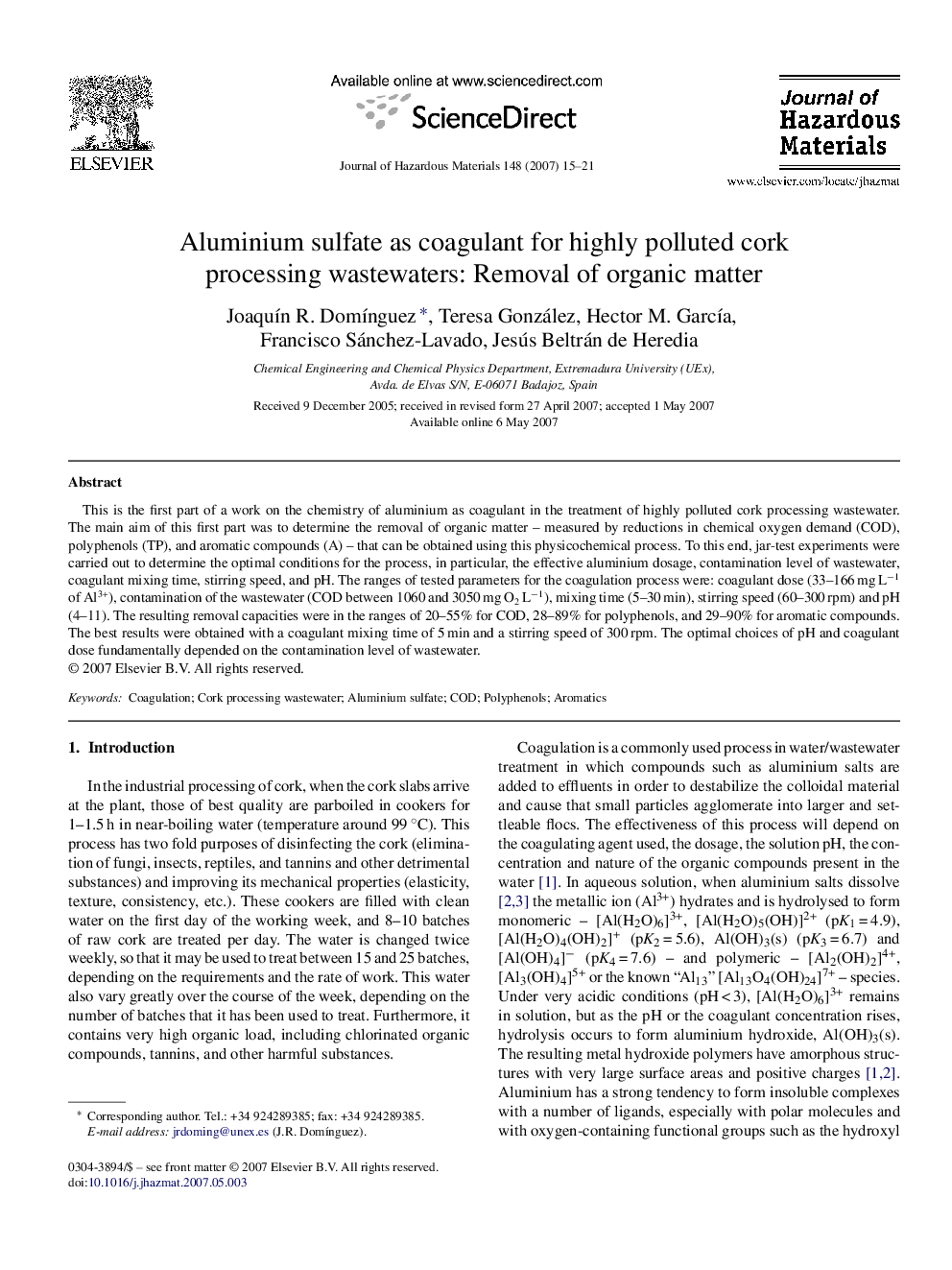| Article ID | Journal | Published Year | Pages | File Type |
|---|---|---|---|---|
| 584370 | Journal of Hazardous Materials | 2007 | 7 Pages |
Abstract
This is the first part of a work on the chemistry of aluminium as coagulant in the treatment of highly polluted cork processing wastewater. The main aim of this first part was to determine the removal of organic matter - measured by reductions in chemical oxygen demand (COD), polyphenols (TP), and aromatic compounds (A) - that can be obtained using this physicochemical process. To this end, jar-test experiments were carried out to determine the optimal conditions for the process, in particular, the effective aluminium dosage, contamination level of wastewater, coagulant mixing time, stirring speed, and pH. The ranges of tested parameters for the coagulation process were: coagulant dose (33-166 mg Lâ1 of Al3+), contamination of the wastewater (COD between 1060 and 3050 mg O2 Lâ1), mixing time (5-30 min), stirring speed (60-300 rpm) and pH (4-11). The resulting removal capacities were in the ranges of 20-55% for COD, 28-89% for polyphenols, and 29-90% for aromatic compounds. The best results were obtained with a coagulant mixing time of 5 min and a stirring speed of 300 rpm. The optimal choices of pH and coagulant dose fundamentally depended on the contamination level of wastewater.
Related Topics
Physical Sciences and Engineering
Chemical Engineering
Chemical Health and Safety
Authors
JoaquÃn R. DomÃnguez, Teresa González, Hector M. GarcÃa, Francisco Sánchez-Lavado, Jesús Beltrán de Heredia,
